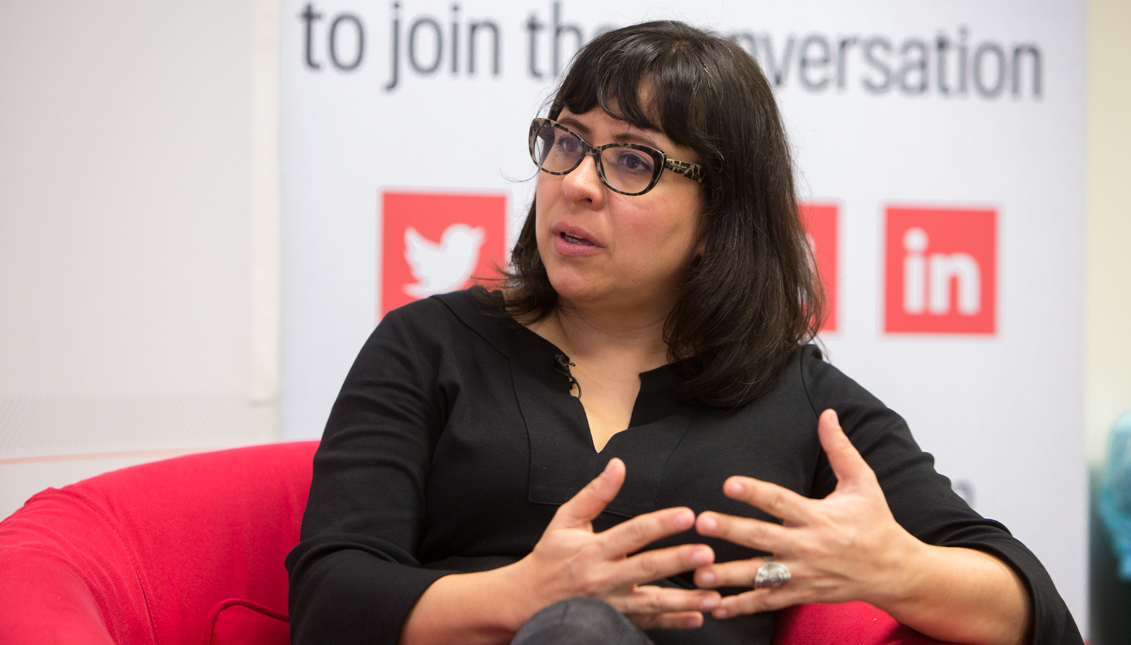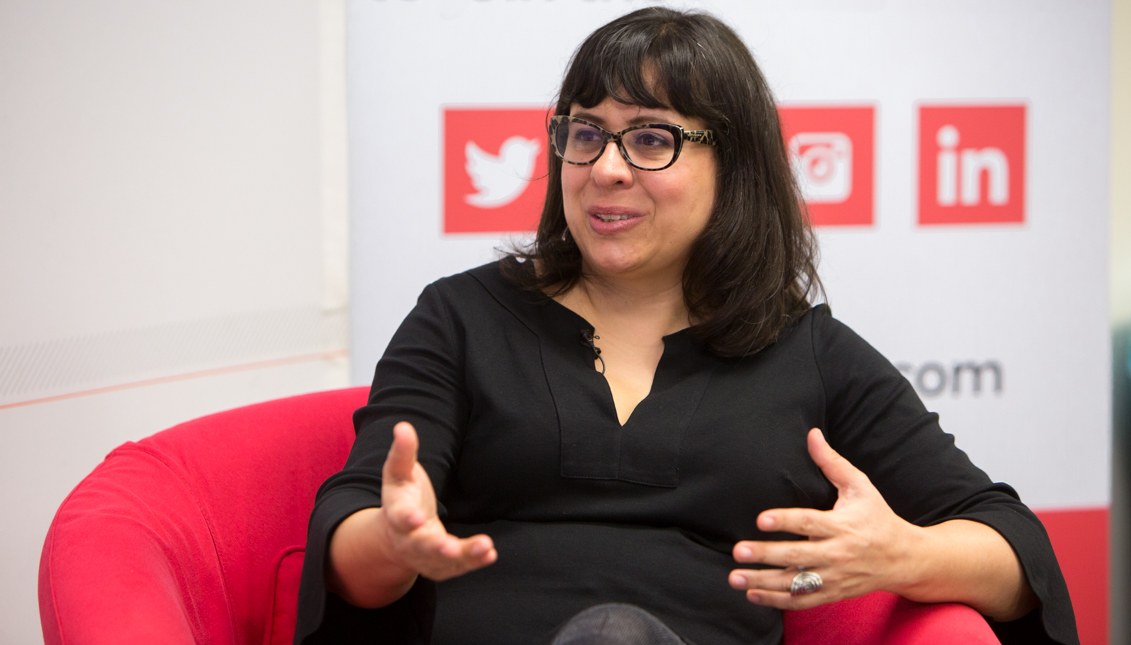
Telling the stories of American DREAMers
In a visit to the AL DÍA newsroom, Eileen Truax talked about misconceptions about immigrants, her book on DREAMers, and more.
Eileen Truax has been called an optimist, and it’s easy to see why. Her warm smile and expressive way of speaking denotes a passion and positivity for her work as a journalist that is at once welcoming and genuine. But no matter how hopeful her outlook, Truax has not shied away from confronting the harshest facts of an American tragedy with no end in sight: the DREAMers.
Truax started reporting her book about DREAMers, undocumented children who were brought to the U.S. by their parents and grew up here, in 2010 — two years before the Obama administration established the DACA program, which afforded DREAMers temporary work permits and protection from deportation. Two federal courts have ruled to block the Trump administration’s move to end the program by March 5, but Congress continues to stall on passing legislation to ensure the future of current DACA recipients and DACA-eligible immigrants. To read Truax’s 2013 book, Dreamers: An Immigrant Generation’s Fight for Their American Dream, is to understand the scope, depth, and historical context of the issue that is currently gripping the attention of journalists and politicians across the country.
Truax first started to learn about Dreamers when she moved from her hometown of Mexico City to Los Angeles in 2004 to report for La Opinión, the largest Spanish-language publication in the U.S. But in 2011 she read the story of Joaquín Luna, a young undocumented person in Texas who committed suicide in 2011 in part because of the trap he felt he was in due to his immigration status.
“I realized that they were dying, and we were not paying attention,” Truax said. From that moment on, she devoted herself to writing a book on DREAMers.
“We are not talking about numbers, economy, if we are going to be safe in the border or not. We are talking about people’s lives, kids’ lives, that trust in this country, that grew up in this country, and that love this country,” Truax said.
“They want to give back to this country...I don’t think there’s anything more American than that,” she added.
Truax critiqued the one-sided view of immigration as a ‘problem,’ which ignores the myriad of ways U.S. society has benefited from the achievements of DREAMers and other immigrants.
“We have to acknowledge that there are people contributing to our society,” said Truax, adding that giving them legal protection and allowing families to stay together is a necessary step not because the U.S. needs to be “nice to them,” but rather, “because that’s the right way to do things when you are living in a democratic society.”
Despite suggestions by some of her editors to add more “hard information” about legislation to her book, Truax chose to focus above all on individual stories.
“If you google what a mother thinks of her children going to civil disobedience [acts] and risking deportation, you will not find that,” she noted. “So it’s not that I think this is more important, it’s just that I thought that this was the piece of information that was missing in the debate, in the whole discussion.”
Truax said it is through stories of young people like Joaquín Luna, Nancy Landa, and others featured in her book, that misconceptions about DREAMers and immigrants as a whole can be broken.
“Some people in the U.S. think about ‘them.’ ‘The immigrants,’ ‘them,’ ‘the Dreamers.’ ‘They’ are being affected. And they do not realize that that’s us, they are part of our communities,” Truax said.
“We have to understand that immigrants are not the other,” she stated. “We cannot detach ourselves, whomever is talking, from these other people. Until we understand that we are not going to be able to move forward.”
Truax said that to change misperceptions of immigrants, anyone can meet immigrants and share their stories with others.
“Before social media, there was social, and that still works. You can go social to talk to your neighbors, and tell them a story: the other day I got in a taxi and the driver told me that… you know? Those are stories that we can share,” Truax said.
“Those stories are appealing because those are real people like ourselves, and people feel related to that. Storytelling is the oldest thing in the world, and it still works,” she affirmed.
RELATED CONTENT

Unlike the phrase used by many immigrants to describe their feelings of belonging, that they feel “ni de aquí, ni de allá,” not from here nor there, Truax says that she feels de aquí y de allá: from and belonging to both her hometown of Mexico City, and her current home in Los Angeles, CA.
For Truax, the state of being between one place and another, belonging to one place and another, is a natural sensation for bilingual journalists who have to do “double the work in order to balance the needs of a diverse audience while also constantly transitioning between one language and another.
According to Truax, Latino media organizations in the U.S. play a role that is distinct from other press organizations.
“The role of ethnic media is to give the readers the tools to become part of the American society,” said Truax, explaining that although the Latino community in the U.S. is increasingly turning to English-language media, for recently-arrived immigrants publishing information in Spanish and in print is still an essential resource.
At the same time, continued Truax, it is important to develop English-language content — the language of the country — so that stories about the Latino community can reach a wider audience.
“Talking about the U.S. and even international affairs, in both languages, to me that’s the future,” stated Truax.
Though she admitted that some barriers will continue to exist for immigrants, she said that it is important for immigrants to feel proud knowing how much they have contributed to U.S. society.
“You will always be the other, but the fight here is to be an other that is still doing things for this country and let other people know that. It doesn’t matter if you are the other. You are a very good other, and this country wouldn’t be the same without you,”she said.











LEAVE A COMMENT:
Join the discussion! Leave a comment.